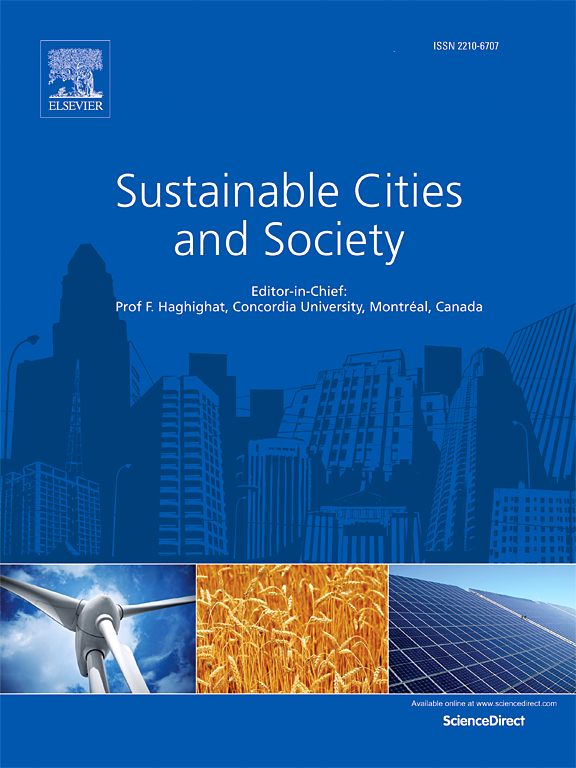Potential causal links of long-term PM2.5 components exposure with diabetes incidence and mortality in the United States
IF 10.5
1区 工程技术
Q1 CONSTRUCTION & BUILDING TECHNOLOGY
引用次数: 0
Abstract
There is limited evidence on the relationship of diabetes burden with fine particulate matter (PM2.5) and its components, which is not conducive to sustainable development in the context of rapid urbanization. To obtain relevant clues in the United States (US), we collected annual county-level diabetes incidence and mortality, concentrations of PM2.5 and five major components (including elemental carbon, organic carbon, sulfate, nitrate, and ammonium), temperature, and socioeconomic factors during 2008–2017. Through an integrating method of difference-in-differences approach and quantile G-computation, we observed that (i) long-term PM2.5 components mixture exposure was associated with diabetes mortality, but not incidence, with percent risk increase (IR%) of 3.58 % (95 %CI: 1.84 %, 5.36 %); (ii) among the five components of PM2.5, sulfate was estimated to have the largest weight (0.519); (iii) the effect of PM2.5 and its components mixture was higher when the summer mean temperature was 2 or 3° below the 10-year average temperature; (iv) in counties with higher health insurance coverage, nitrate was the most important component (with the greatest weight of 0.829). Our findings suggest that long-term PM2.5 exposure is associated with increased diabetes mortality, and reducing sulfate and nitrate emission could effectively alleviate the burden of PM2.5-related diabetes mortality in the US.
求助全文
约1分钟内获得全文
求助全文
来源期刊

Sustainable Cities and Society
Social Sciences-Geography, Planning and Development
CiteScore
22.00
自引率
13.70%
发文量
810
审稿时长
27 days
期刊介绍:
Sustainable Cities and Society (SCS) is an international journal that focuses on fundamental and applied research to promote environmentally sustainable and socially resilient cities. The journal welcomes cross-cutting, multi-disciplinary research in various areas, including:
1. Smart cities and resilient environments;
2. Alternative/clean energy sources, energy distribution, distributed energy generation, and energy demand reduction/management;
3. Monitoring and improving air quality in built environment and cities (e.g., healthy built environment and air quality management);
4. Energy efficient, low/zero carbon, and green buildings/communities;
5. Climate change mitigation and adaptation in urban environments;
6. Green infrastructure and BMPs;
7. Environmental Footprint accounting and management;
8. Urban agriculture and forestry;
9. ICT, smart grid and intelligent infrastructure;
10. Urban design/planning, regulations, legislation, certification, economics, and policy;
11. Social aspects, impacts and resiliency of cities;
12. Behavior monitoring, analysis and change within urban communities;
13. Health monitoring and improvement;
14. Nexus issues related to sustainable cities and societies;
15. Smart city governance;
16. Decision Support Systems for trade-off and uncertainty analysis for improved management of cities and society;
17. Big data, machine learning, and artificial intelligence applications and case studies;
18. Critical infrastructure protection, including security, privacy, forensics, and reliability issues of cyber-physical systems.
19. Water footprint reduction and urban water distribution, harvesting, treatment, reuse and management;
20. Waste reduction and recycling;
21. Wastewater collection, treatment and recycling;
22. Smart, clean and healthy transportation systems and infrastructure;
 求助内容:
求助内容: 应助结果提醒方式:
应助结果提醒方式:


